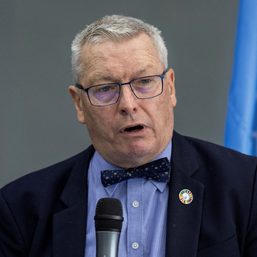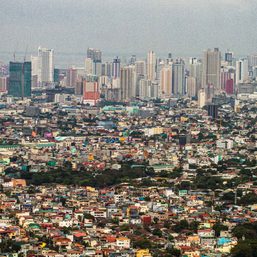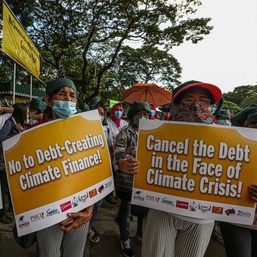SUMMARY
This is AI generated summarization, which may have errors. For context, always refer to the full article.

MANILA, Philippines – The Philippines has submitted its National Adaptation Plan (NAP) to the United Nations Framework Convention on Climate Change (UNFCCC), the Climate Change Commission (CCC) confirmed in a statement on Tuesday, June 4.
According to the CCC, the Philippines is the third ASEAN country and the 56th in the world to submit a NAP. The document, submitted on May 30, covers a 30-year period from 2030 to 2050.
“It is a dynamic document that will change as the nature and complexity of climate and related hazards shift and human, sectoral, and infrastructure exposure and vulnerability changes,” said Environment Secretary Toni Yulo-Loyzaga on Wednesday, June 5.
Earlier in May, Loyzaga said that “the cost of inaction on adaptation within the 2030 decade is estimated to be around P1.4 trillion.”
A NAP covers a country’s medium- and long-term plans on how it will adjust to current and future effects of climate change. This could include improving early warning systems, developing agricultural crops that can withstand extreme weather events, and protecting forests and coastal wetlands.
The submission was made ahead of the 60th session of the Subsidiary Body for Implementation and Subsidiary Body for Scientific and Technological Advice (SB60) held in Bonn, Germany.
National delegates and civil society representatives typically meet in these sessions as part of the preparations before the annual climate summit of the Conference of Parties.
During these sessions, the Philippines called to “close mitigation and adaptation gaps” and “support development and implementation of NAPs and NDCs (Nationally Determined Contributions) by developing nations.”
“We need to build stronger and sustained momentum for transformative climate action, based on science and evidence, indigenous and local knowledge,” CCC Executive Director Robert E.A. Borje said on Monday, June 3, in Bonn.
NAP looks at eight key sectors for adaptation action, including agriculture, health, and livelihoods. It outlines the following strategies across sectors:
- Strengthen infrastructure resilience.
- Safeguard livelihoods with social protection and regulations.
- Empower local governments and communities to take adaptation action.
- Mainstream integrated adaptation governance.
- Scale up nature-based solutions.
Environmental groups welcomed this development. Aksyon Klima Pilipinas, a civil society network of organizations working towards climate action, said they had “successfully lobbied” key principles in the final version of the text.
Among these, the coalition said, are the inclusion of food self-sufficiency and organic agricultural practices as priority outcomes, as well as putting emphasis on the “unique circumstances of indigenous peoples and their ties to their ancestral lands.”
The Philippine government had initially presented its NAP during the Conference of Parties (COP) last year in Dubai.
After the COP in 2023, President Ferdinand Marcos Jr. instructed his Cabinet to “focus on high-risk regions” in the implementation of NAP.
In 2010, COP created the process to formulate NAPs. The Philippines’ adaptation plan can be accessed here. – Rappler.com
Add a comment
How does this make you feel?








There are no comments yet. Add your comment to start the conversation.